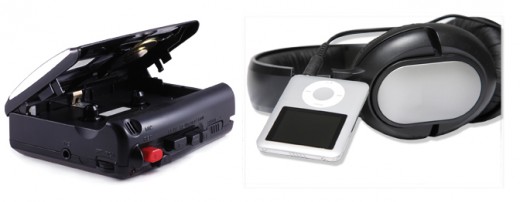Technology evolves to meet students’ needs
 I still remember my excitement years ago when I purchased my first Sony Walkman.
I still remember my excitement years ago when I purchased my first Sony Walkman.
I thought how marvelous was the technology that first reduced the size of music storage to a cassette tape and then to create a device to make it mobile. I would take my tape of choice and head out the door to enjoy complete music-listening freedom.
My, how the world has changed. I evolved from a Walkman to my current iPod. I now have more than 5,000 songs at my fingertips with the ability to create playlists, listen to various genres or choose by artist or album. In addition, my smart phone gives me the ability to listen to Pandora, choose radio stations or download songs.
Music technology has transitioned from a device to make your music mobile to a device to personalize your every listening desire. This transition, I believe, also serves as a model for educational and instructional technology.
Schools used to be the keepers of information. Teachers had textbooks, the library had reference materials, and some schools even had special instructional films, videos, or graphics. Students would come to school to have access to such materials. Books were arranged in sequenced chapters, dictionaries and encyclopedias were arranged alphabetically, and all students worked together to learn the content from the various resources.
Customizing information
Educational technology has made it possible to customize learning to each student’s ability and interests. Students can find information on the Web that is linked to other sites with information. Chapters have been replaced by infinite branching and networking of resources. The schools no longer control the content, but they must be able to develop students who can use the content to communicate ideas, make decisions, evaluate information and solve real problems.
In Columbia Public Schools, we’re doing our part to develop students to be native users of technology and to meet today’s requirements and expectations for information access. The district is on schedule to have wireless Internet access in all schools by the end of next year.
Our technology plan is aggressive in the purchase of mobile devices (tablets, e-readers, etc.) so that students and staff can have real-time access to information. Student learning will move from content acquisition to content application and synthesis.
Wireless learning
Several schools are already piloting wireless learning programs. Parkade and Blue Ridge elementary schools have MyOn Reader. The program is an “Amazon.com” type of model that allows students to download books based on interests and reading level.
Students can read a book anywhere and at any time with a mobile device. Some students already own a mobile device, and others will need one from the school. In a few short months, students at Parkade Elementary School have read more than 8,000 titles. More importantly, it is the student’s choice and not connected to a specific assignment.
While our students are natives to educational technology, many of the adults are technology immigrants. Students demand real-time access to information and want to have a degree of control over content and sources. Teachers want to make their curriculum more authentic and relevant.
Informational technology may be the perfect fit to connect the needs of the students with the needs of the teachers.


